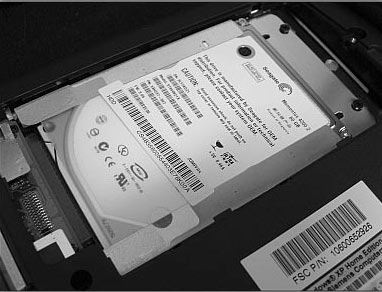Hard Disk Drive Definition: It is also called HDD,”disk drive,” (hard drive) or hard disk is a non-volatile. The hard disk drive is the primary storage unit of the computer. This is where your data, programs and the Windows system that is used to make your computer are physically saved in a digital form (string composed of 0s and 1s). There hard disk capacity is expressed in gigabytes (GB). More hard disk drive will have a large capacity, the more you can install programs or store documents in your computer.
We’ll be covering the following topics in this tutorial:
Types of Computer Hard Disk Drives
There are at present two standards discs: ATA-IDE and SATA. The ATA-IDE standard, although still widespread, is doomed to disappear in favor of SATA. SATA hard drives are indeed more faster and have a much larger storage capacity.
Difference Between Internal & External Hard Disk
Internal Hard Drive and External Hard Disk share a similar features.
• The main difference is that internal hard drive are installed inside to your desktop computer or External Hard Disk are connected via USB 2.0.
• Internal hard drive store all of data, while external hard disk is to protection your data in case corruption takes place.
• Internal hard drive is much faster than an External Hard Disk. The internal drive is connected advanced technology bus.
Hard Disk Drive Physical Description
A hard disk consists of a stack of disk platters that are made up of aluminum alloy of glass coated with a magnetic material; actually, most hard disks have from two to eight platters. Each side of each platter has a read/write head that floats over the surface of the rapidly spinning disk and picks up (reads) magnetically stored data, or records (writes) data onto the disk. It’s just like a tape recorder, except that in a hard disk, the head doesn’t touch the disk surface. Instead, the read/write heads float on an extraordinarily thin cushion of air, about the height of a fingerprint. Really. That’s why it’s important not to jostle your hard disk or kick it while it’s doing its work.

The surface of a disk is divided into imaginary tracks and sectors. Tracks are concentric circles where the data is stored. These tracks are numbered from the outermost ring to the innermost ring, starting from zero. Disk sectors refer to the number of fixed size areas that can be accessed by one of the disk drive’s read/write heads, in one rotation of the disk, without the head having to change its position. An intersection of a track and a disk sector is known as track sector.
Each sector is uniquely assigned a disk address before a disk drive can access a piece of data. In order to make the disk usable, first it must be formatted to create tracks and sectors. The track sectors are grouped into a collection known as cluster. It refers to the basic allocation unit for storage on a disk.
On the hard disk you’ll keep the operating system, and copies of all the software applications you use, such as your word processor and your spreadsheet program, plus copies of all the documents or files you create. The hard drive is sometimes referred to as the “C drive” due to the fact that Microsoft Windows designates the “C” drive letter to the primary partition on the primary hard drive in a computer by default.While this is not a technically correct term to use, it is still common. For example, some computers have multiple drive letters (i.e. C, D, E) representing areas across one or more hard drives.
Some computers don’t absolutely need a hard disk for storing things they use floppy disks instead. But a hard disk drive is much, much faster than a floppy disk drive, and it stores much more information. And as software programs and operating systems get more sophisticated, they also take up more disks space-so much disk space that many programs and systems can’t even fit on a floppy disk. These days, almost every computer has a hard disk.
 Dinesh Thakur holds an B.C.A, MCDBA, MCSD certifications. Dinesh authors the hugely popular
Dinesh Thakur holds an B.C.A, MCDBA, MCSD certifications. Dinesh authors the hugely popular